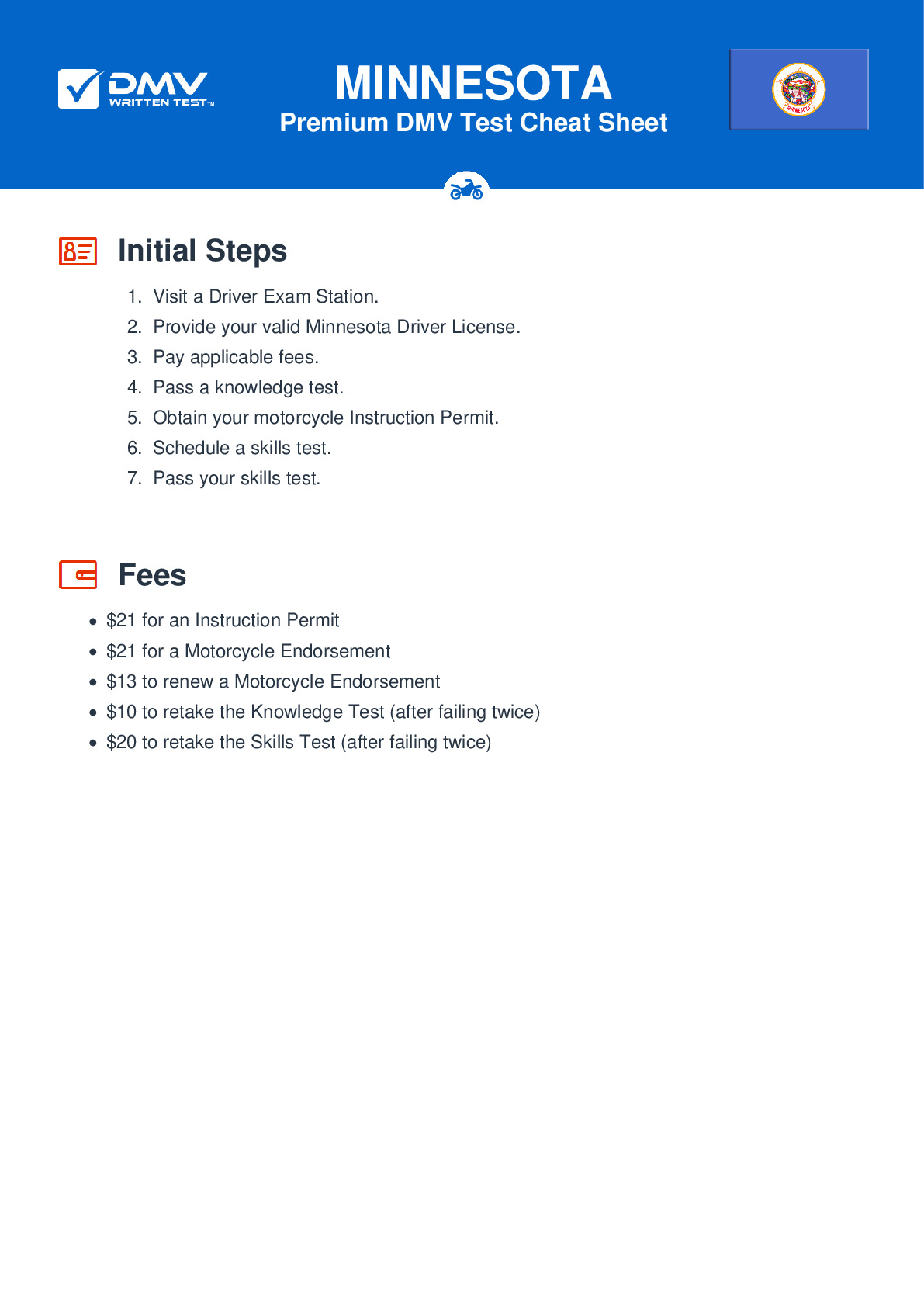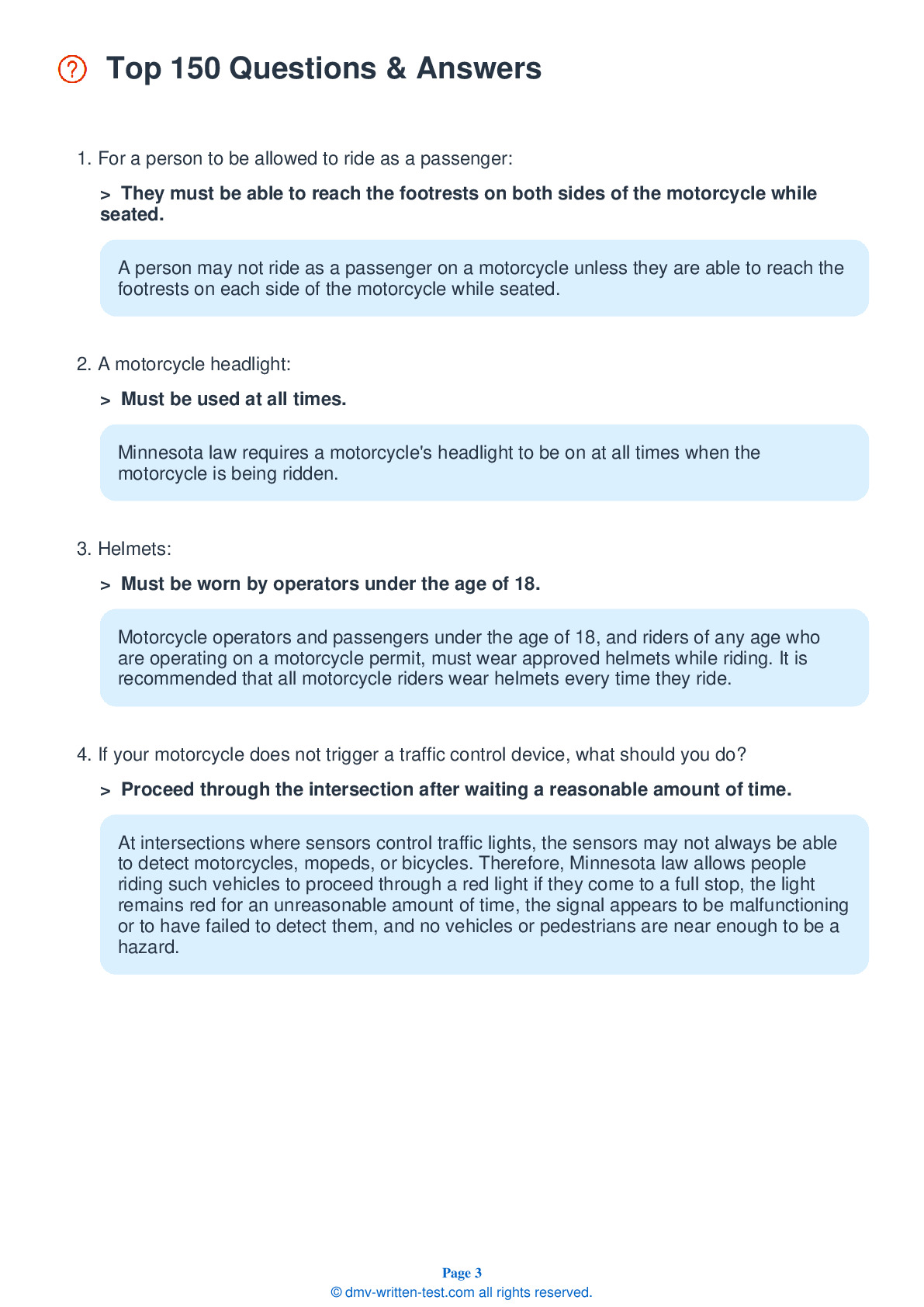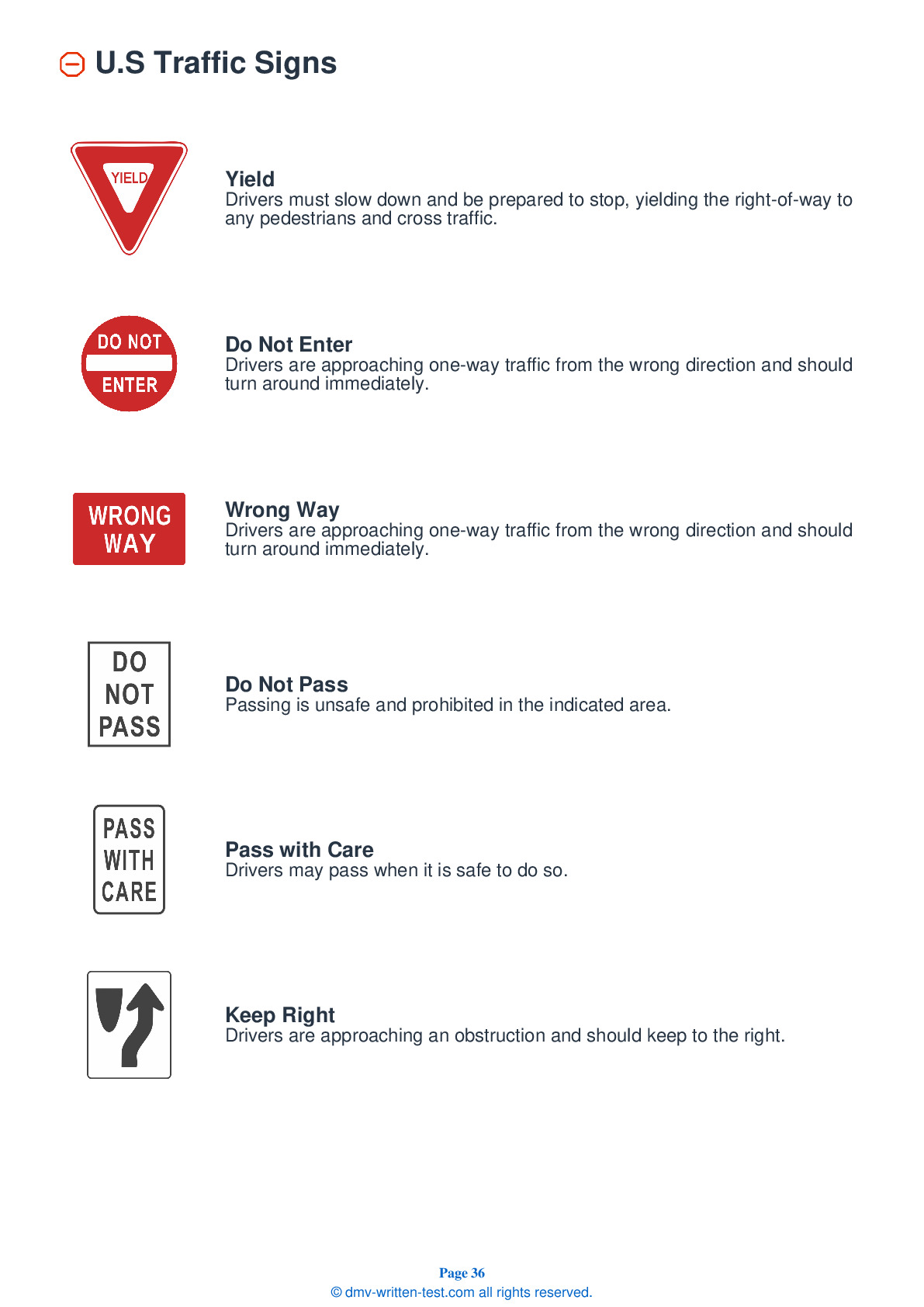2025 Minnesota Motorcycle Permit Test 10
The following questions are from real DMV written motorcycle permit tests. These are some of the actual permit questions you will face in Minnesota when getting your motorcycle learners permit. Each motorcycle theory practice test question has three answer choices. Select one answer for each question and select "grade this section." You can find this button at the bottom of the drivers license quiz. For a complete list of questions and answers for Minnesota please visit https://cheat-sheets.dmv-written-test.com/en/minnesota/motorcycle.
Number of Tests
Number of Question
Passing Score
25. To be effective, an eye or face shield should be all of the following, except:
Explanation
To be effective, eye protection and face shields must be free of scratches; be resistant to penetration; give a clear view to either side; fasten securely; permit air to pass through; and permit enough room for eyeglasses or sunglasses to be worn underneath.
26. After drinking, what lessens the effects of alcohol?
Explanation
The liver burns alcohol at a set rate, and there is nothing you can do to speed along the process. The only way to lessen the effects of alcohol is to give your body the time needed to remove it.
27. When making a turn:
Explanation
It is possible to brake while turning, but it should be done with great care. When a motorcycle is leaning to turn, there is less traction available for stopping because some of the traction is being used for turning.
28. When following another vehicle as a beginning rider, you should:
Explanation
A following distance of at least four seconds is recommended for beginning riders. Increase your following distance any time conditions are less than perfect.
29. If you borrow a motorcycle:
Explanation
If you borrow a motorcycle, make all of the same pre-ride safety checks that you would make on your own motorcycle. You should ride cautiously when using an unfamiliar motorcycle and allow yourself extra space when stopping.
30. A properly-fitted motorcycle:
Explanation
If your motorcycle fits you properly, your feet should be able to reach the ground while you are seated. When riding your motorcycle, keep your feet firmly on the footrests.
31. If you find your motorcycle being chased by a dog, you should:
Explanation
If you are being chased by a dog, downshift and approach it slowly. Then, as you approach the dog, accelerate and leave it behind.
32. A leather jacket:
Explanation




